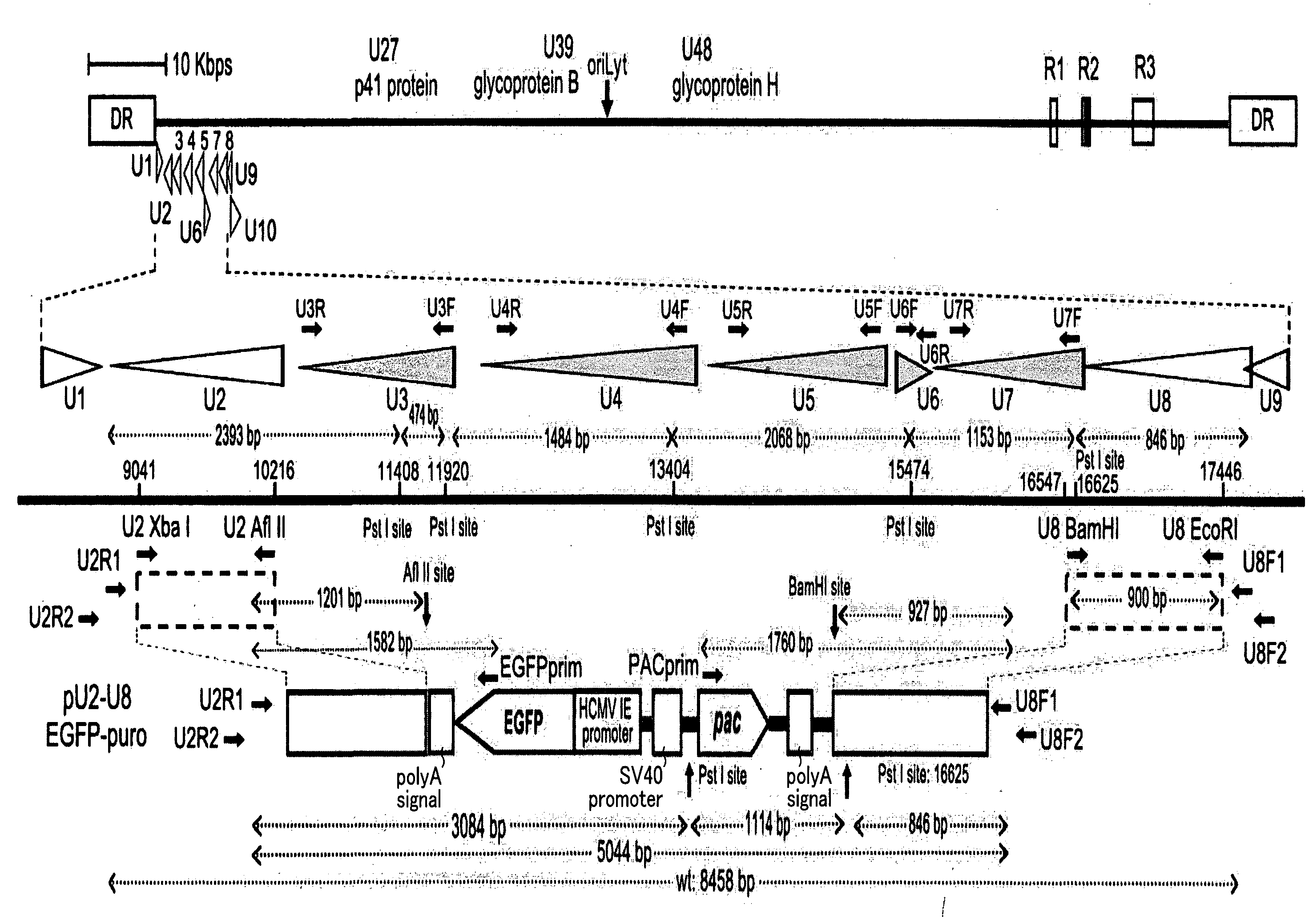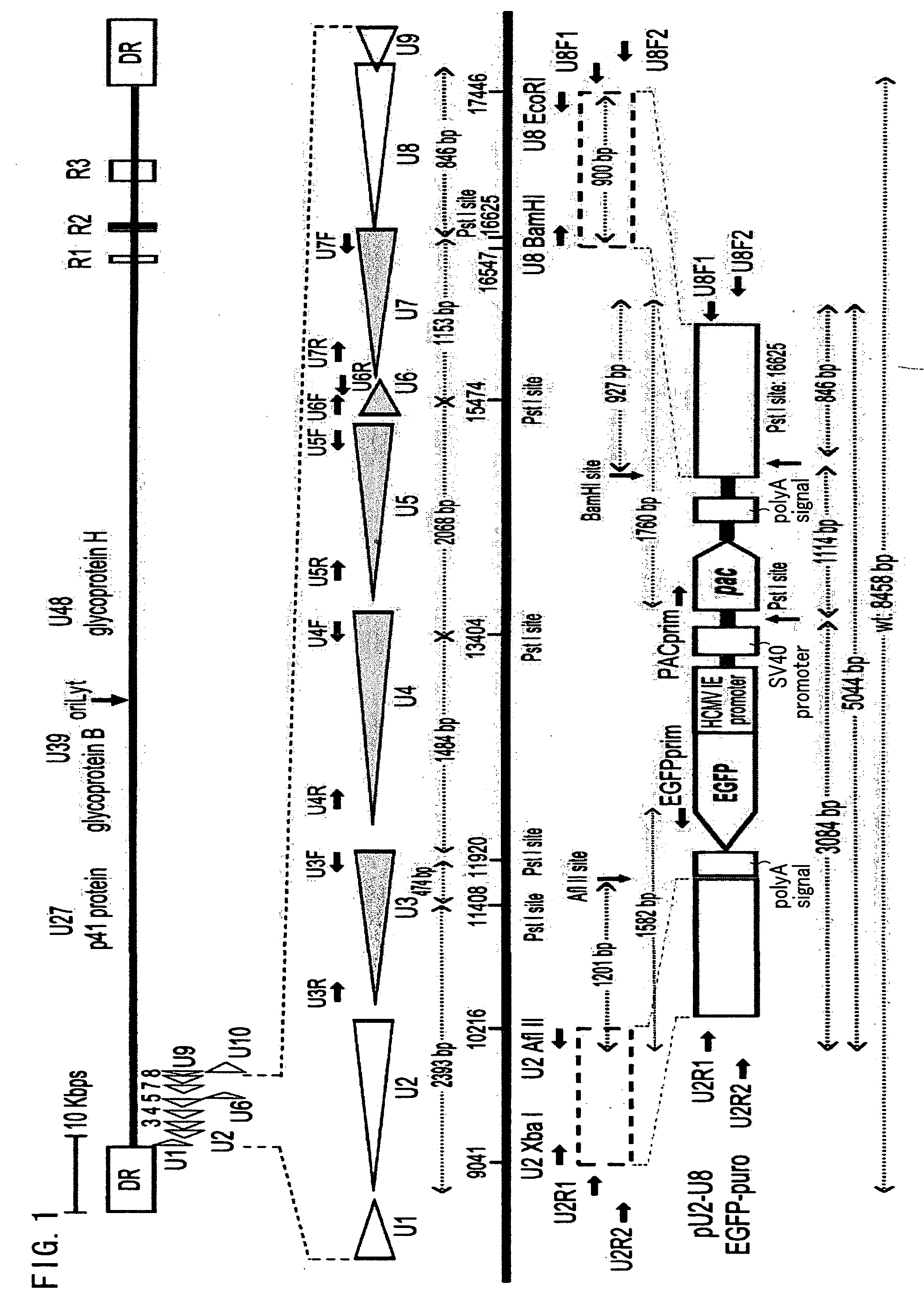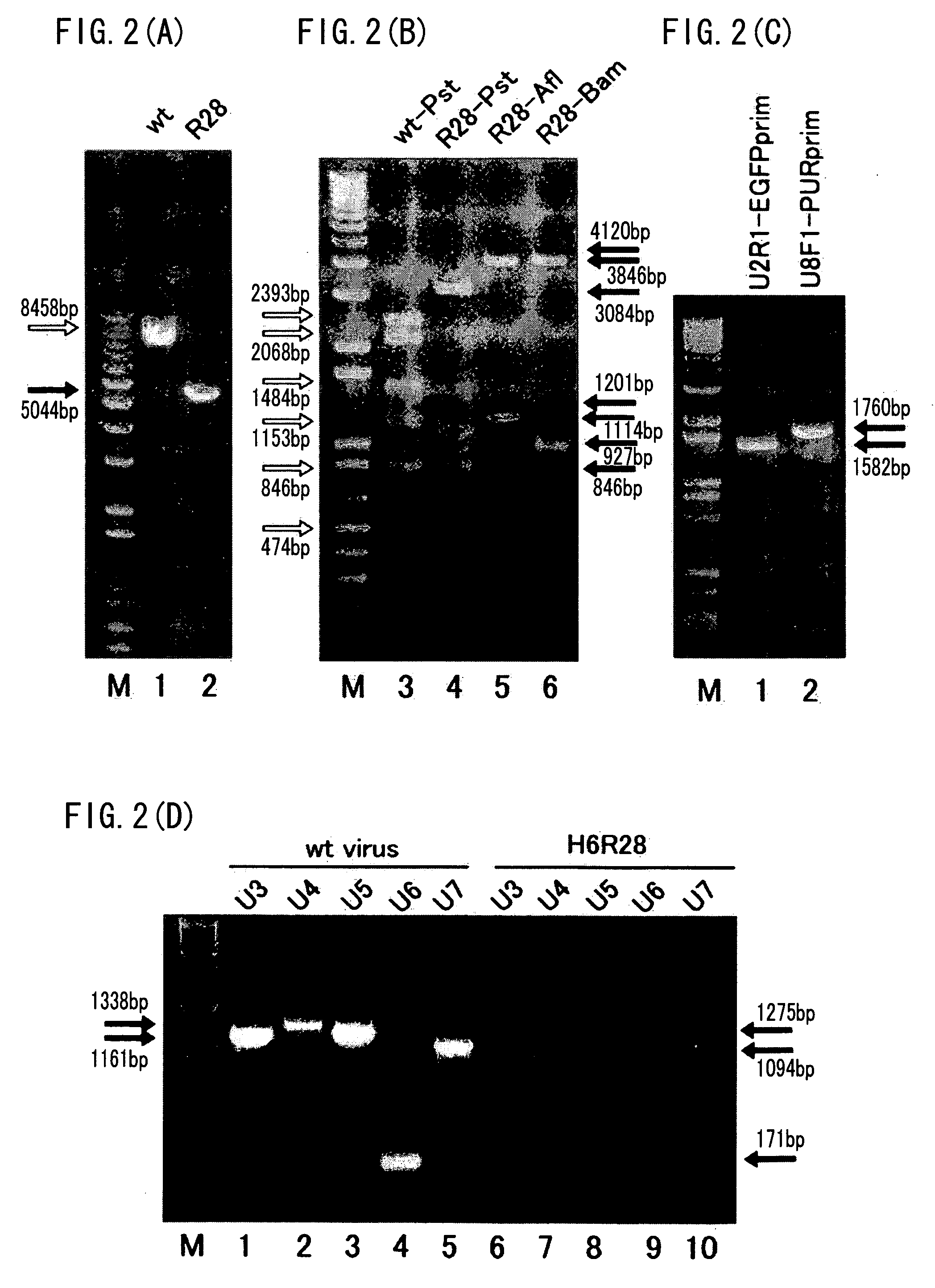Recombinant virus vector originating in HHV-6 or HHV-7, method of producing the same, method of transforming host cell using the same, host cell transformed thereby and gene therapy method using the same
a technology of recombinant virus and vector, which is applied in the direction of viruses, non-embryonic pluripotent stem cells, drug compositions, etc., can solve the problems of poor expression efficiency of introduced genes, poor efficiency of non-viral transfection techniques, and poor efficiency of introducing genes when used to introduce genes into blood cells
- Summary
- Abstract
- Description
- Claims
- Application Information
AI Technical Summary
Benefits of technology
Problems solved by technology
Method used
Image
Examples
Embodiment Construction
[0085]The present invention is now described in detail in the embodiment below.
Definitions
[0086]As used herein, HHV-6 refers to variants A and B of human herpesvirus 6.
[0087]As used herein, HHV-7 refers to human herpesvirus 7.
[0088]As used herein, a recombinant virus and a recombinant virus vector refer to a virus or a virus vector that is prepared by incorporating foreign genes in viral genes, and that causes either one of productive infection, latent infection / reactivation, and abortive infection when used to infect a host cell.
[0089]As used herein, a dispensable region refers to a viral gene region, the lack of which does not lead to a complete loss of the proliferating ability of the virus.
[0090]As used herein, an exogenous nucleotide sequence refers to a nucleic acid sequence other than those found in naturally occurring viral genes.
[0091]As used herein, latent infection refers to a situation where production of infectious virus is suspended with the viral genes retained in the...
PUM
 Login to View More
Login to View More Abstract
Description
Claims
Application Information
 Login to View More
Login to View More - R&D
- Intellectual Property
- Life Sciences
- Materials
- Tech Scout
- Unparalleled Data Quality
- Higher Quality Content
- 60% Fewer Hallucinations
Browse by: Latest US Patents, China's latest patents, Technical Efficacy Thesaurus, Application Domain, Technology Topic, Popular Technical Reports.
© 2025 PatSnap. All rights reserved.Legal|Privacy policy|Modern Slavery Act Transparency Statement|Sitemap|About US| Contact US: help@patsnap.com



